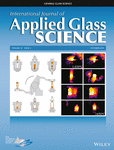|
Autores/as
Biosca, A. ; Borrós, S. ; Borrós, S. ; Pedret Clemente, V.; Hyre, M. R.; García Granada; A. ; Pedret Clemente, V.; Hyre, M. R.; García Granada; A.
|
Abstract
Glass forming to produce perfume bottles with specific thickness distribution profiles is based on trial and error and requires several tests in production line. These tests are expensive and time‐consuming, which increases time to market. The use of a numerical model aims to reduce the number of prototypes by performing virtual tests of the mold equipment and the process conditions. This article presents results of numerical simulations of the blow and blow forming process to predict glass thickness distribution. Correlation of the simulation results of the glass temperature with experimental infrared measurements on the glass skin and experimental validation of glass forming simulations and influence of the blank mold cavity in the thickness distributions of perfume bottles are provided. Finally validation of the results of axisymmetrical and three‐dimensional models for axisymmetric bottles defining a useful technique to use the right blank mold for desired thickness distribution while reducing the trial and error testing.
|

WoS
Scopus
Altmetrics

|
|
Publicación
International Journal Of Applied Glass Science, 2019, vol. 10, no. 4, p. 569-583
|
